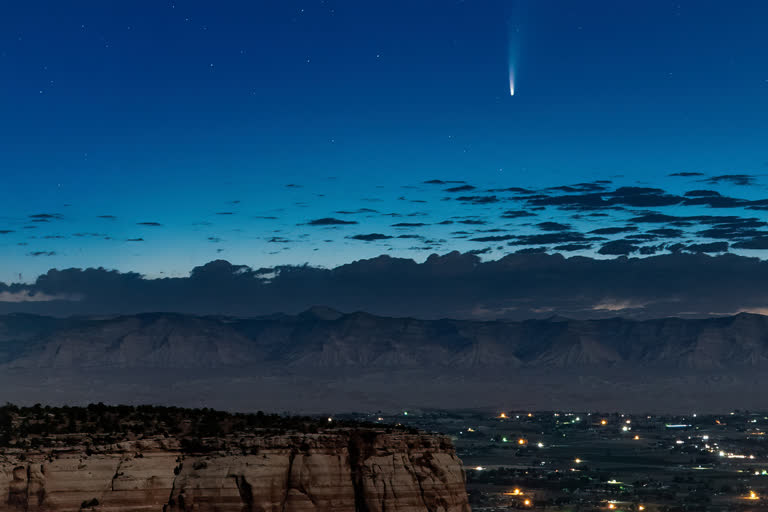Cape Canaveral: A newly discovered comet is streaking past Earth, providing a stunning nighttime show after buzzing the sun and expanding its tail.
Comet Neowise — the brightest comet visible from the Northern Hemisphere in a quarter-century — swept within Mercury’s orbit a week ago. Its proximity to the sun caused dust and gas to burn off its surface and create an even bigger debris tail. Now the comet is headed our way, with the closest approach in two weeks.
NASA's Neowise infrared space telescope discovered the comet in March.
Scientists involved in the mission said the comet is about 3 miles (5 kilometers) across. Its nucleus is covered with sooty material dating back to the origin of our solar system 4.6 billion years ago.

The comet will be visible across the Northern Hemisphere until mid-August when it heads back toward the outer solar system. While it's visible with the naked eye in dark skies with little or no light pollution, binoculars are needed to see the long tail, according to NASA.
Read | Hubble sees fragile comet break into dozens of pieces
It will be about 7,000 years before the comet returns, “so I wouldn't suggest waiting for the next pass,” said the telescope's deputy principal investigator Joe Masiero of NASA's Jet Propulsion Laboratory in Pasadena, California.

He said it is the brightest comet since the mid-1990s for stargazers in the Northern Hemisphere.
Astronauts aboard the International Space Station have already caught a glimpse.

NASA's Bob Behnken shared a spectacular photo of the comet on social media late Thursday, showing central Asia in the background and the space station in the foreground.
"Stars, cities, spaceships, and a comet!" he tweeted from orbit.
-
Night sky, just before dawn from @Space_Station.
— Bob Behnken (@AstroBehnken) July 9, 2020 " class="align-text-top noRightClick twitterSection" data="
Stars, cities, spaceships, and a comet! pic.twitter.com/fCKjrfayC1
">Night sky, just before dawn from @Space_Station.
— Bob Behnken (@AstroBehnken) July 9, 2020
Stars, cities, spaceships, and a comet! pic.twitter.com/fCKjrfayC1Night sky, just before dawn from @Space_Station.
— Bob Behnken (@AstroBehnken) July 9, 2020
Stars, cities, spaceships, and a comet! pic.twitter.com/fCKjrfayC1
(AP)



